G'morning everyone....
Today I am going to share with you more details on kitchen garden herbs...everything from alternative names to harvesting and shelf life.
There are a lot of herbs to cover, so this will most likely be a 4 part series....Enjoy m'friends....
~Peace~
Kitchen Herb Reference Guide
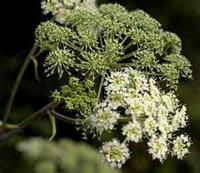 Wild Angelica (angelica sylvestris)
Wild Angelica (angelica sylvestris)
Also Known As: Angleweed, woodland angelica, root of the Holy Ghost.
Uses: Eases rheumatic pains and neuralgia; relieves itching and swelling on skin; makes a yellow dye. Chewing the root helps hangovers, and regular use is believed to cultivate a distaste for all alcoholic beverages.
Parts Used: Most of the plant: leaves, roots, stems, seeds.
Taken As: Dried root, tinctures, wash.
Harvested: Roots in summer or fall, before the flowering stem dies down.
Shelf Life: 1-3 years.
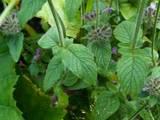 Wild Basil (clinopodium vulgare)
Wild Basil (clinopodium vulgare)
Also Known As: Hedge basil, hedge calamint, bedfoot, mountain mint.
Uses: Olive oil infused with wild basil has long been used by villagers in Northern Greece to treat ulcers and wounds. Basil tea eases stomach complaints while the leaves added to salads and other foods, help digestion. Drink an infusion to strengthen the immune system.
Parts Used: Leaves
Taken As: Raw herb, tincture, tea.
Harvested: Use as needed. If drying, harvest in spring or early summer.
Shelf Life: 1-2 years
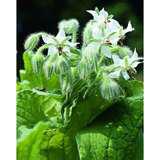 Borage (borago fficinalis)
Borage (borago fficinalis)
Also Known As: Bugloss
Uses: Can help to treat depression; acts as an anti-inflammatory agent, can be used as a treatment for bronchitis; stimulates lactation in nursing mothers; can help to relieve fever.
Parts Used: Leaves, stems, flowers.
Taken As: Can be eaten raw in salads, or cooked like spinach. The stems can be eaten raw like celery.(the flowers look especially beautiful in salads).
Harvested: Use as required. For drying , remove the flowers and leaves from the stems, place all parts on a wire rack and leave until dry.
Shelf Life: All parts last from 1-3 years.
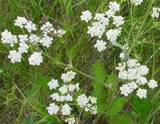 Caraway (carum carvi)
Caraway (carum carvi)
Also Known As: No other names used.
Uses: Can aid lactation in mothers. An infusion of seeds treats indigestion and colic; the bruised seeds taken with fresh bread is an old remedy for earache. Make powdered seeds made into a poultice to treat bruises.
Parts Used: Seeds, leaves, roots.
Taken As: Infusion. Seeds can be baked in bread, and used as a pickling spice.
Harvested: Fall if sown in the spring; summer if sown the previous fall.
Shelf Life: Leaves and roots 1-3 years. The seeds last linger - they can be kept for 3-4 years.
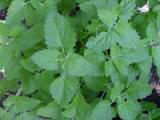 Catnip (nepeta cataria)
Catnip (nepeta cataria)
Also Known As: Cat-mint
Uses: Catnip added to an eyewash relieves inflammation caused by hay fever, flu, ad colds; tea alleviates symptoms of fever and hay fever. Promotes sweating. A poultice mad from the leaves relieves tooth and gum pain. Tea made from the freshly cut herb is a useful cure for insomnia, stress, tension headaches and is good for general relaxation.
Parts Used: Leaves, flowering tops.
Taken As: Tea, poultices, infusion.
Harvested: Summer
Shelf Life: Lasts for 1-3 years.
 Chamomile (chamaemelum nobile)
Chamomile (chamaemelum nobile)
Also Known As: Wild or garden chamomile, ground apple, whig plant, rauschert, mayweed.
Uses: As a tea to ease insomnia, indigestion, nausea, irritable bowel syndrome, and to relieve PMT. A decoction applied to the skin relieves itching from allergies and skin disorders. A poultice alleviates hemorrhoids.
Parts Used: Flowers, leaves.
Taken As: Decoction, tea, in lotions, poultice.
Harvested: As soon as the flowers open, which will be anytime from spring to late summer.
Shelf Life: 1-3 years.
 Colt's-Foot (tussilago farara)
Colt's-Foot (tussilago farara)
Also Known As: British tobacco, coughwort, foal's foot, horsehoof.
Uses: As a poultice to help ease ulcers; in a syrup or throat lozenge to ease coughing; as a substitute for smoking tobacco; as a poultice applied to wounds to help healing.
Parts Used: Flowers and leaves.
Taken As: A poultice for wounds and ulcers, a tobacco substitute made of the dried leaves and flowers, and as an ingredient in cough syrups or throat lozenges.
Harvested: Flowers in early spring, leaves in late spring.
Shelf Life: 1-3 years.


